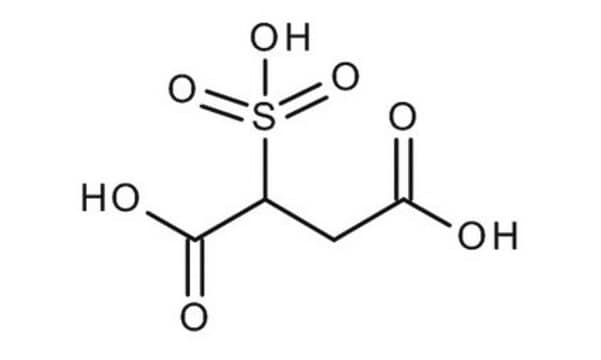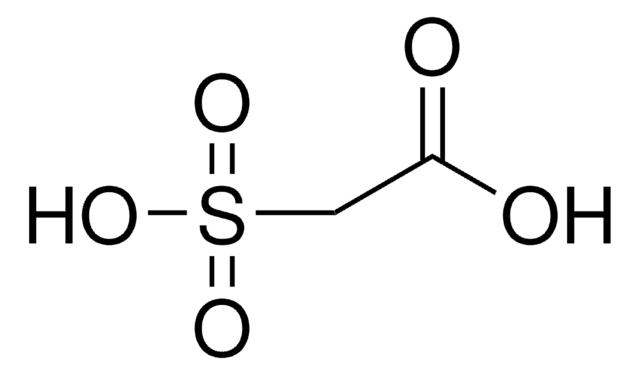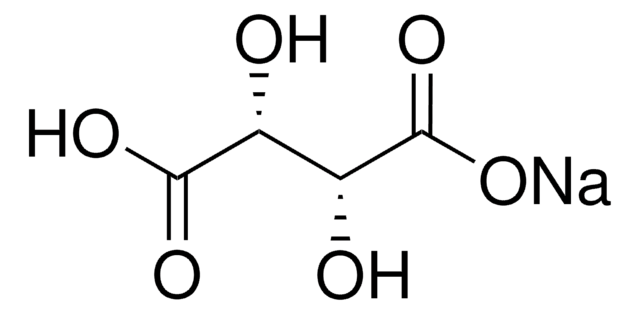338567
Sulfosuccinic acid solution
70 wt. % in H2O
Synonym(s):
2-Sulfobutanedioic acid
About This Item
Recommended Products
form
viscous liquid
concentration
70 wt. % in H2O
refractive index
n20/D 1.449
density
1.438 g/mL at 25 °C
SMILES string
OC(=O)CC(C(O)=O)S(O)(=O)=O
InChI
1S/C4H6O7S/c5-3(6)1-2(4(7)8)12(9,10)11/h2H,1H2,(H,5,6)(H,7,8)(H,9,10,11)
InChI key
ULUAUXLGCMPNKK-UHFFFAOYSA-N
Looking for similar products? Visit Product Comparison Guide
Application
- Modification of nanocellulose membrane by impregnation method with sulfosuccinic acid for direct methanol fuel cell applications: This study examines the use of sulfosuccinic acid in various concentrations to improve the properties of nanocellulose membranes for fuel cells (Sriruangrungkamol & Chonkaew, 2021).
- A high-strength polyvinyl alcohol hydrogel membrane crosslinked by sulfosuccinic acid for strontium removal via filtration: Research focusing on using sulfosuccinic acid to enhance polyvinyl alcohol hydrogel membranes for effective strontium filtration (Yoon et al., 2019).
- Cross-linked poly (vinyl alcohol)/sulfosuccinic acid polymer as an electrolyte/electrode material for H2–O2 proton exchange membrane fuel cells: This paper discusses the application of sulfosuccinic acid in creating cross-linked polyvinyl alcohol for fuel cell membranes (Ebenezer et al., 2016).
- Preparation of chitosan/polyvinyl alcohol blended films containing sulfosuccinic acid as the crosslinking agent using UV curing process: An investigation into using sulfosuccinic acid to crosslink chitosan/polyvinyl alcohol films for improved mechanical properties (Yun et al., 2017).
- Investigation on resistive humidity sensing in sulfosuccinic acid doped polyaniline films: This research explores the potential of sulfosuccinic acid doped polyaniline films for humidity sensing applications (Biswas et al., 2021).
Signal Word
Danger
Hazard Statements
Precautionary Statements
Hazard Classifications
Eye Dam. 1 - Skin Corr. 1B
Storage Class Code
8A - Combustible corrosive hazardous materials
WGK
WGK 3
Flash Point(F)
Not applicable
Flash Point(C)
Not applicable
Certificates of Analysis (COA)
Search for Certificates of Analysis (COA) by entering the products Lot/Batch Number. Lot and Batch Numbers can be found on a product’s label following the words ‘Lot’ or ‘Batch’.
Already Own This Product?
Find documentation for the products that you have recently purchased in the Document Library.
Customers Also Viewed
Our team of scientists has experience in all areas of research including Life Science, Material Science, Chemical Synthesis, Chromatography, Analytical and many others.
Contact Technical Service











